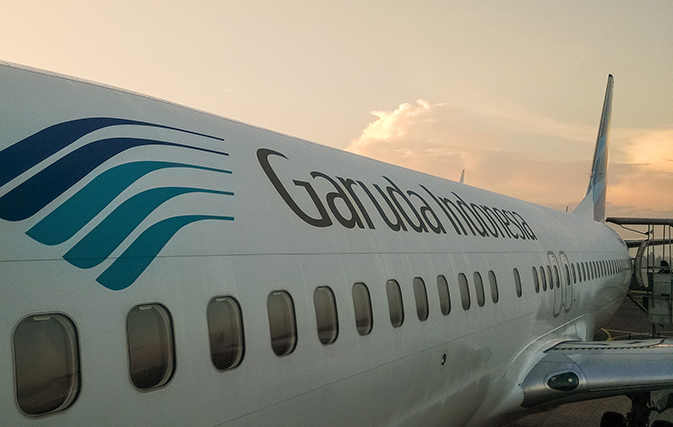JAKARTA — Indonesia’s flag carrier is seeking the cancellation of a multibillion dollar order for 49 of Boeing’s 737 Max 8 jets, citing a loss of confidence after two crashes in the past six months.
It is the first announcement of a cancellation since Boeing’s new model aircraft were grounded following fatal crashes in Indonesia and Ethiopia.
PT Garuda Indonesia, which had ordered 50 Max 8 jets in 2014 and had received just one plane last year, has sent a letter to Boeing last week requesting to cancel the order worth US$4.9 billion, the company’s spokesman Ikhsan Rosan said Friday. The carrier has so far paid Boeing about $26 million for the order.
“Passengers always ask what type of plane they will fly as they have lost trust and confidence in the Max 8 jet. This would harm our business,” said Rosan.
“We don’t want to use Max jets … but maybe will consider switching it with another Boeing model of plane,” Rosan said. He said Indonesian passengers are afraid to take flights using any Max model, whether it’s the 8, 9 or 10 series.
A preliminary report from Indonesia’s National Transportation Safety Committee in December stopped short of declaring a probable cause of the Oct. 29 crash.
Officials have provided scant details since then, saying they are still analyzing data from a cockpit voice recorder that was only recovered from the sea in January.
Meanwhile, in Europe, Polish national carrier PLL LOT said it was considering asking for financial compensation from Boeing or even a delay to deliveries of purchased 737 Max 8 aircraft after the planes were grounded globally following the crash in Ethiopia.
In a statement Friday, LOT said it would wait for communications from Boeing and flight regulators on whether to put the Max 8 planes back into service. LOT has five 737 Max 8 planes and is to receive nine more this year. Its total fleet counts over 80 aircraft.
Another Polish carrier, charter airline EnterAir, said Friday it would also seek damages. It has two Max 8 planes and has placed orders for another four.
Earlier this month, Norwegian Air Shuttles said it would seek compensation from Boeing. It had grounded its 18 Boeing 737 Max 8 aircraft.
The news comes on the heels of revelations that Air Canada and WestJet have at least one of the optional safety features on their Boeing 737 Max 8 aircraft that were reportedly lacking on the jets that crashed in Ethiopia and Indonesia.
Air Canada and WestJet Airlines both say they purchased disagree lights used by the aircraft’s software system during flight to avert stalls.
The New York Times has reported the Ethiopian Airlines and Lion Air jets involved in recent fatal crashes were not equipped with angle of attack indicators and disagree lights.
The safety features are not standard on the aircraft and are offered by Boeing as upgrades.
Air Canada spokeswoman Isabelle Arthur said the country’s largest airline purchased both safety features for its fleet of 24 Max 8 planes.
WestJet spokeswoman Morgan Bell said the Calgary-based airline’s 13 Max 8 planes are not configured with the angle of attack indicators.
She said the disagree light was purchased so the new aircraft will have common configurations with its Boeing 737 NG fleet.
Neither airline would disclose the cost of purchasing these options.
Norwegian Air, which is preparing to launch Canadian service to Europe on March 31, says it hasn’t added the optional extra because it is “not a critical safety feature nor is it a requirement by any aviation authority.”
“We are in close dialogue with Boeing and follow their and the aviation authorities’ instructions and recommendations, we immediately implement all safety recommendations as required,” stated acting chief operating officer Tomas Hesthammer.
The low-cost carrier said it is working on using other aircraft to cover the route but said it is too early to tell how the grounding of the Boeing planes will impact its operations in the coming months.
The safety indicators help pilots detect any erroneous readings from two vanelike sensors that determine the position of the plane’s nose relative to oncoming air.
The angle of attack indicator displays the readings of the two sensors while the disagree light is activated if the sensors don’t provide the same information, the U.S. daily said.
The MCAS system can automatically push the plane’s nose down to prevent stalling if it determines it is pointing up at a dangerous level.
The New York Times also said, citing unnamed sources, that Boeing will soon update the MCAS software and make the disagree light standard on all new 737 Max planes, but maintain the angle of attack indicator as an option.
Boeing is reportedly rushing to complete the upgrades on jets by early next week.
With files from The Canadian Press

